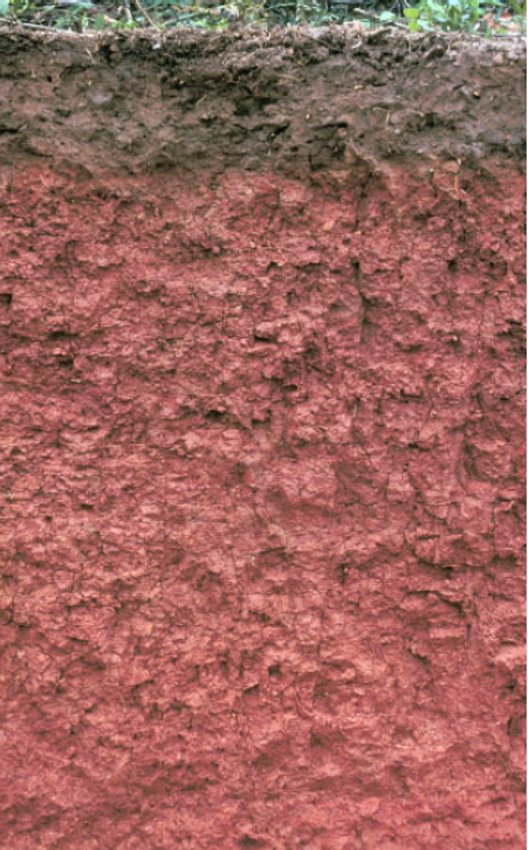Fun Fact: NC has a state soil, called Cecil. It covers 1.6 million acres of the state. This is it’s profile.
I love the red clay I use. The way it feels running through my hands on the potter’s wheel, the way it holds the glaze color, and the beautiful earthy red it fires too. When the clay order arrived, it got me thinking of dirt. I mean soil. Dirt is what you sweep up, and clay is a type of soil.
Soil is a living, breathing thing that, like the body’s skin, requires care and attention. Soil processes and recycles nutrients, like carbon, so that living things can use them over and over again, making it vital to survival. The world has around 23,000 types of soil. North Carolina has about 500. One is clay. Clay contains minerals like iron, magnesium, alkali metals, and alkaline earths. The magic is that these minerals develop plasticity when wet, making the clay malleable.
The red clay soil North Carolinians see along the roadways and in our yards is good for more than pottery. Clay is stable ground. It doesn't expand or swell with water. It breathes, iron oxidizes in the presence of air, turning it red. Clay is good for building roads and homes. It also attracts potters. Immigrant potters from England and Germany first arrived in Seagrove, NC, in the late 18th century. Seagrove is the “The Handmade Pottery Capital of the United States.”
Tile made with a throwing clay body. It’s not flat nor is it square.
Like most things that come from the earth, clay for art's use needs refining. What potter's and artists use is called a clay body, several clays, formulated for a purpose, like throwing, to mature in a temperature range. I use two clay bodies, one for throwing and another for tilemaking. Grog is the difference, fired clay ground up into different mesh sizes. The amount and the size of the grog will alter the amount the clay will shrink, warp, and move in the firing. A throwing body will shrink about 13%. The tilemaking body, which has a high amount of grog, will shrink 8%.
Clay comes in a variety of natural neutrals, from white to almost black. I keep coming back to red clay for my murals. It gives a warm neutral undertone to my bright colors, making them livable for the long term. They're less likely to compete with other decorative elements like window treatments or upholstery. Glazes are rich with a kaleidoscope of colors, that richness brings my murals to life according to my clients. It also makes changing the wall color, window treatments, or getting a new sofa easy when you want a change. If you're interested in having a ceramic mural created for your home, I have an informative how-to guide that you can get below.
In the mural below, it’s easy to see that several shades of gray, greens, blues, creams, and tans would all be good choices when it came to refreshening your homes look over time.
This 12” x 18” tile is available for installation or with a frame in the web-store.



